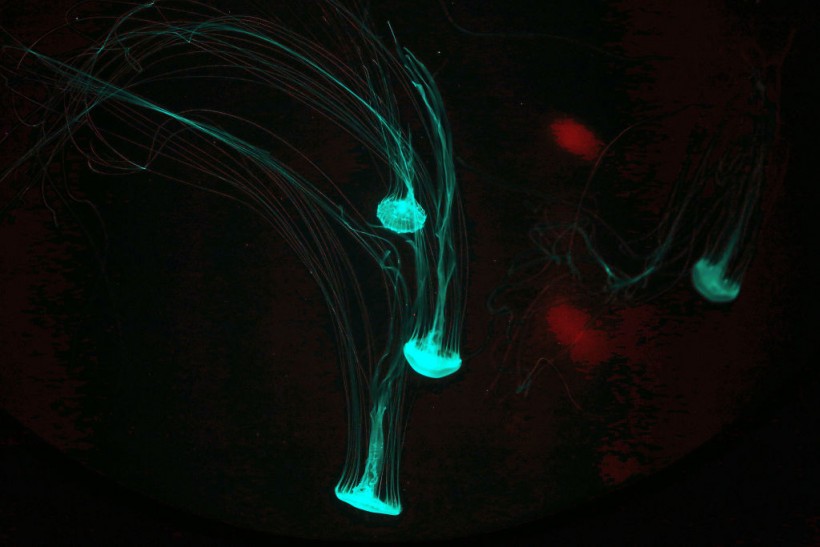Scientists from the University of Bristol are creating underwater robots inspired by a mysterious zooplankton that may one day explore extraterrestrial oceans, according to the university's press release.

Jellyfish swim in a tank of the aquarium at The Scientific Center Kuwait (TSCK) in Kuwait City on July 8, 2021. - TSCK comlpex spans over 80,000 square meters, and housing one of the largest aquaria in the Middle East, with the capacity of one of its tanks at 1.5 million litres and holding over 100 different species of animals.
Salps-inspired Robots
These sea creatures-inspired robots, known as RoboSalps, were developed to function in extreme and uncharted environments, such as extraterrestrial waters.
Salps, which have semi-transparent barrel-shaped bodies that give them the appearance of jellyfish, members of the Tunicata family and have an interesting life cycle that alternates between solitary and aggregate generations, where they join to create colonies.
Since RoboSalps have similar light, tubular bodies, they can join together to form colonies, giving them unique capabilities that are only attainable when they operate together.
"RoboSalp is the first modular salp-inspired robot. Each module is made of a very light-weight soft tubular structure and a drone propeller which enables them to swim," Valentina Lo Gatto, lead author of the study, said in a statement.
"These simple modules can be combined into 'colonies' that are much more robust and have the potential to carry out complex tasks. Because of their low weight and their robustness, they are ideal for extra-terrestrial underwater exploration missions, for example, in the subsurface ocean on the Jupiter moon Europa."
The RoboSalps can also swim on its own since its soft tubular structure is equipped with a small motor with rotor blades, which is often used for drones.
Colony-forming Robots
RoboSalps modules are challenging to control when swimming alone, but after being connected to form colonies, they become more stable and exhibit complex movements, according to the team.
Additionally, by connecting many units, scientists instantly create a redundant system, which prevents it from failing. Even if one module fails, the colony as a whole can still function and move.
Due to their inherent redundancy, RoboSalps are claimed to be soft, energy efficient, and resilient. This makes them ideal for autonomous missions in which immediate and direct human control may not be possible.
Dr. Helmut Hauser of Bristol's Department of Engineering Maths claimed that these robots are perfect for extraterrestrial missions since they can be easily stored in low volume and are also ideal for decreasing global space mission payloads.
It may also explore remote submarine environments, sewage tunnels, and industrial cooling systems.
Rossiter notes that the team is also developing control approaches that would take advantage of the compliance of the modules to create energy-efficient movements that closely resemble biological salps.
Related Article: 'Chameleon Robots:' These Robots Can Change Colors and Mimic Their Surroundings Through 3D Printing










